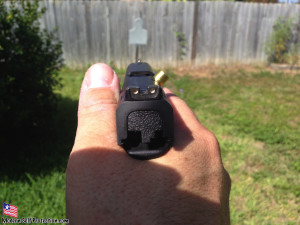We’ve talked about all the other ways a gun might malfunction, and that would be about 99% of the time. The last way a gun may malfunction is if it’s broken. Go through all the other posts first (if you haven’t, read Immediate Action, Intermediate Action, Advanced Tricks, Broken Guns: What to Do, or Why Handguns Malfunction, go read them first).
If you are defending yourself, don’t worry about if your gun is broken, just go to plan B. If you are at the range and you are getting multiple malfunctions, here are some of the common breakages of handguns and what they look like.
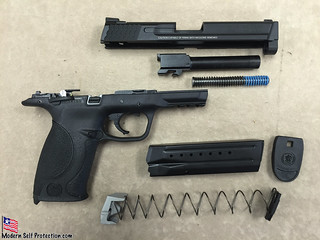
Clean Your Gun at the First Sign of Problems
First step to any possible gun problem is to break the gun down, clean it well, and lube it. While you’re in there, inspect parts to see if there is anything broken or not. Also, while you have your cleaning gear out, pull apart your magazine and clean that, too. No oil in the magazines, just wipe them out with a rag and wipe off the spring and follower just because you have it apart already.
Is it You?
About 90% of all malfunctions are user induced. Eliminate you as a variable first. The easiest way is to have someone else shoot your gun. If the same malfunction is happening, then it’s probably a gun issue. Killing your ego here could save you a lot of work, money, time, and embarrassment. The first thing I did when I thought my Glock was broken was have multiple people fire it and when all of us came to the same conclusion, it was time to find a gunsmith.
The gun shop (Sparks Firearms) I work at had a lady come in with a small 9mm and said it didn’t work at all. Small 9mm handguns are prone to user error so we tried to help her with technique and grip first. She said the gun was broken and wanted it warrantied. We sent it to the manufacturer who sent it back saying there was nothing wrong with the gun and suggested it was a shooter problem. They put 150 rounds through the gun and couldn’t get it to malfunction. The owner said she couldn’t get it to work at all, every other round would malfunction. Even after looking at her shooting grip and seeing it was wrong, she still was convinced that the gun was at fault. I almost told her I’d buy the gun as a project for myself for less than half what she paid for it, but that seemed like a conflict of interest (and just mean). She probably took a bath on it and someone else got a great gun for a really cheap price. Don’t be that person.
Once you eliminate you, the next most common problem is the magazine. And that’s an easy test. Just try different magazines. If the gun malfunctions the same with three or four different magazines, then it’s probably not the magazine. If it is the magazine, you can try to fix it. Cleaning a magazine is as far as I will go to diagnose a mag problem. Maybe replace a spring, but normally, if I clean the mag and it still doesn’t work, I jump on it to destroy it. Then, get a new mag. Problem solved. How do you know what magazine is the problem? You number them right? Check out this post on Marking Magazines for more information.
Ammo Problems
The other outside problem could be your ammo. Check it carefully. Read this post on how to inspect new ammo. If you don’t see it before you fire it, you’ll know when you try to fire it that it’s bad because it doesn’t go bang. If the gun goes click and nothing happens, check the round. If the primer is dented, it could be a bad primer or more likely that the primer wasn’t seated correctly. Trying to fire the ammo again will tell you. A bad primer won’t ignite no matter how many times you hit it. An improperly seated primer will go off the second time around.
With ammo, you can also get a squib load. It’s the ammo’s fault, but it could really mess up the gun. Be careful with these rounds. A squib or audible pop is when there isn’t enough powder to get the bullet all the way down the barrel and it gets stuck partially through. If a bullet is stuck in the gun and you fire another round behind it, you could blow up your gun. Normally, no one gets hurt but it generally rings your chimes and destroys your gun.
RECOIL SPRINGS
If the gun isn’t picking up the next round out of the magazine and then going fully into battery, it could be a recoil spring. The spring jams the gun back into battery after picking up a round and shoving it in the chamber. If the spring isn’t stiff enough (because it’s worn out, common on small 1911s) then it may not go fully into battery. Or the gun could stovepipe a bunch (like the picture at the top). This is because there isn’t enough resistance and the slide is moving too fast to create the right motion to get rid of the old shell.

Bad Ejector
A broken ejector could also cause a stovepipe malfunction. After you fire, the extractor rips the spent shell out of the chamber and pulls it back with the slide. At the back of the slide travel is normally the ejector that is a simple rod sticking out that pushes the shell up and out when the slide bangs the spent shell into it. The ejector takes a beating every time you fire the gun. After time it could be worn down, broken off, or come lose. Either way, it needs to be replaced. Really easy job if you can find a new one. Modern guns aren’t a problem because there are always parts. This is a rare breakage, but some people that shoot a lot will just replace the part from time to time. A friend of mine just replaced it when his Glock hit 100,000 rounds just for sure. That’s just an idea of how long they last.
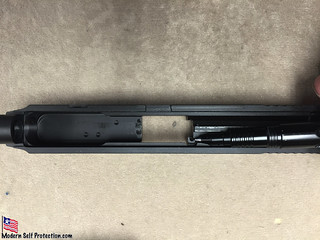
Broken Extractor
The extractor rips the shell out so the ejector can get rid of it. The extractor on most guns is spring-loaded and really doesn’t wear out. They do break on rare occasions. Mostly the breakage is due to improperly loading the gun over a long period. The gun is designed to pull rounds out of a magazine and not be hand loaded. When the gun pulls the round out of a magazine, the lip of the shell slides up and underneath the extractor. The part never moves or has any stress put on it during loading. If you drop a single round into the top of the gun and then let the slide go home, the extractor bangs into the back of the shell and then pops over the top of it. This causes undue stress on the extractor and the round. Don’t do this as a normal practice. The gun will survive for a long time doing this but sooner or later your extractor and/or spring will give out. If you inspect the extractor closely, you can generally see where it’s broken. You’ll know the extractor is the problem when the gun constantly won’t pull the shell out or will rip the lip off the shell instead of pulling it out of the chamber.
Main Spring
The striker or main spring is what drives the hammer or striker to hit the firing pin. This spring is put under tension by the gun cocking itself when the slide moves back and forth under recoil or when you pull the trigger on a double action gun. When the spring is weak, it can cause light hammer strikes that look like an ammo problem. If you keep having rounds that fail to have the primer ignite, try different ammo. If the gun is doing the same thing with multiple types and lots of ammo (4 or more) that it usually works with, then this is probably your problem. Mostly light hammer strikes are an indication of bad ammo. Rule that out first. Not an easy fix if you can’t break the gun down all the way. But if you can do an armorer level strip to your gun, then it’s really easy to change out.
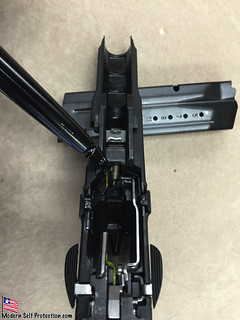
Trigger Reset Spring
In rare cases, the trigger reset spring can break. This spring makes the trigger travel forward after you fire a shot and move your finger forward. Ironically, a Glock will function without a reset spring as long as you keep shooting from reset. But most guns are just broken. If the trigger doesn’t go back to the front on it’s own and you can grab the trigger and pull it out and then fire the gun again, it’s probably this spring. It’s a really easy fix for anyone that can strip down the gun. But a word of caution, these springs mostly look symmetrical but are not. They are designed to go in a certain way. They will go together backwards and upside down. If you get it wrong, you could break the spring and your gun won’t work right even though it went back together. Easiest way to avoid this problem, look at how the spring is in on a functioning gun of that type and put it in the same way! I only say this out of experience; it is the worst to figure out what is wrong when you put that thing in backwards.
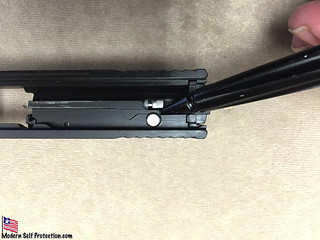
Firing Pin Safety Plunger
Another part I’ve seen go bad on some modern striker fired guns is the safety plunger spring. The spring pushes the plunger into the way of the striker keeping it from going forward unless the trigger is pulled. But for some reason I’ve seen this spring bind and/or break (mostly due to improper installation) and keep the plunger from being pushed out of the way. If this happens the pistol will just go click but never fire. The striker is being released and then blocked from hitting the primer by the plunger.
Simply field strip the gun and look at the bottom of the slide and find the plunger. Push it in. It should go in fairly easily. If it doesn’t, then you will need to pull it out and inspect it. If the spring and/or plunger are bad, it will be very obvious once the parts are out. Look up your specific gun to get this part out. Every gun is different: in a 1911, it’s held in by the extractor, an M&P it’s held in by the rear sight, and in a Glock it’s held in by the extractor under spring tension. 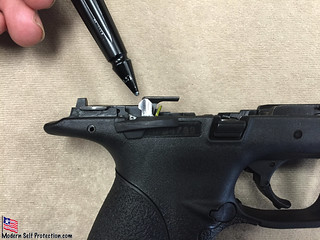
Bad Trigger Bar
A really odd breakage that could create the same problem as the safety plunger is part of the trigger bar that pushes on the plunger breaking off or wearing down to the point it doesn’t push the plunger out of the way anymore. While this is really rare it’s something to check. This one is so rare I’ve never seen it and only can confirm one case on a Glock 21 where this has actually happened, but have heard of several more. This is one of those things that if you look at two trigger bars from the same gun it will be really obvious if it’s broken or not.
Conclusion
What’s the best way to keep your gun running? Practice and Maintenance. To practice is fun, use my favorite drill: put 1 round in each mag. Draw your weapon and fire the gun. It goes to slide lock. Reload and fire again until you are out of mags and then repeat. At home, use the snap caps and just lock the slide back manually and keep going. This will get you to learn your weapons manipulation skills and make you a much better shooter while bringing down your chances of a user-induced malfunction.
Do a lot of maintenance on your gun, especially if it’s new to you. Check out YouTube and learn how to break it down all the way to the bare frame and slide. Learn what each piece looks like and what it does. You may also want to buy a second of the same gun. Then, it’s really easy to compare and put back together. I learned to strip a 1911 by myself before YouTube. My saving grace (the only way I got the gun back together) was that I had another one to compare it to as I went. And having a second of the same gun is just a good idea for a plethora of reasons.
Stay Safe,
Ben
